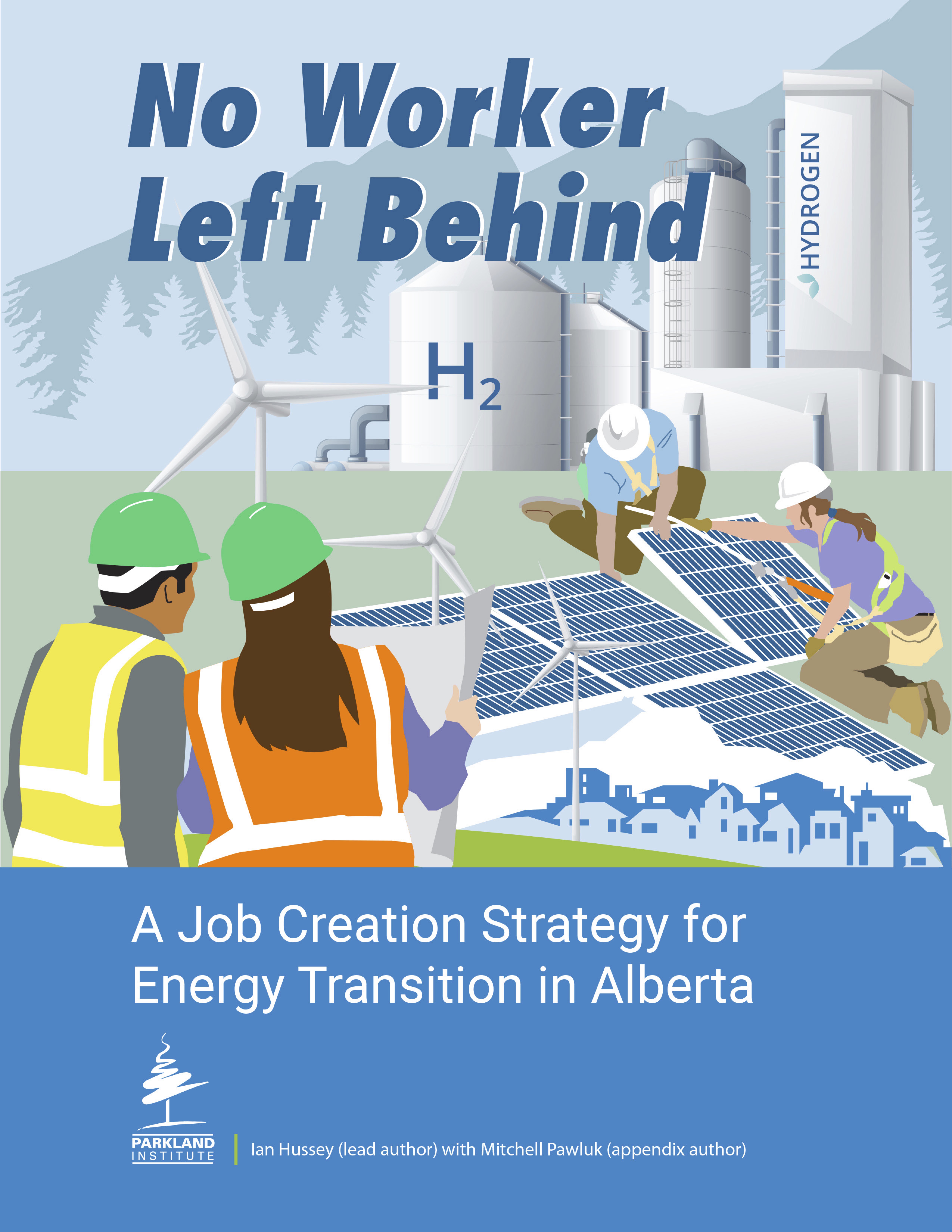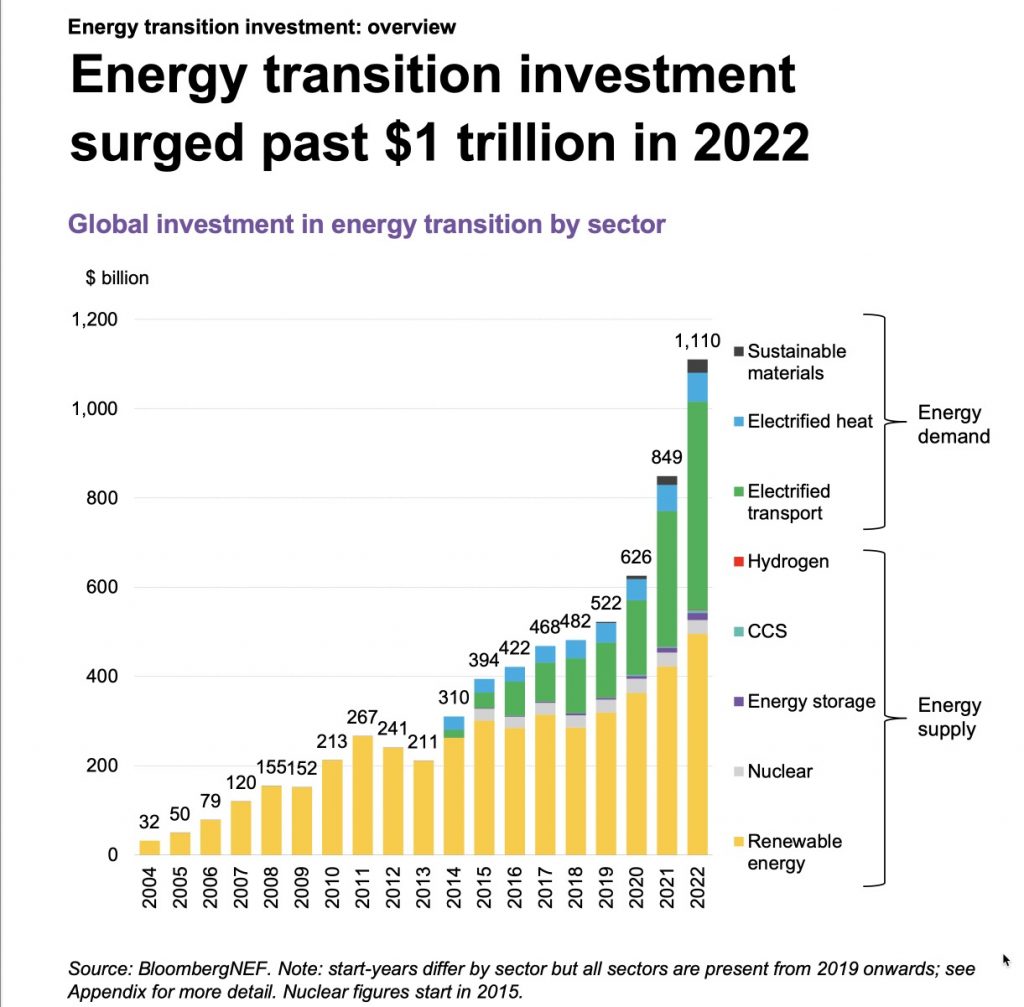By David Dodge, GreenEnergyFutures.ca
The world’s economy is transitioning rapidly with a record $1.1 trillion in investment in renewable energy, electrified transport, and electrified heating in 2022. This involves massive changes to the economy and the workforce that drives it.
According to Natural Resources Canada the goal of a “just transition” is to prepare the workforce to fully participate in the low-carbon economy while minimizing the impacts of labour market transitions.”
While this sounds reasonable on the surface the idea has been turned into a political football and even characterized by some politicians as some sort of plot to slash jobs.
Canada signed the Paris Agreement on climate change and by doing so pledged to “the imperative of a just transition of the workforce and the creation of decent work and quality jobs.”
Canada’s answer to this is just transition legislation and presumably some wort of financial commitment to support it.


Ian Hussey of the Parkland Institute at the University of Alberta just wrote a report entitled “No Worker Left Behind.”
“We’re talking mainly about making sure that communities and workers that have been historically reliant on fossil fuels be taken care of and be given support as the global and Canadian energy systems transition,” says Hussey.
Energy transition already happening
“Transition’s already happening in Alberta, we’ve been transitioning for a number of years now,” says Hussey.
In fact, Hussey says the Canadian oil industry has shed 43,548 jobs since 2014, 35,000 of which were in Alberta.
The spectre of energy transition is undoubtedly weighing on the minds of oil executives, but wild fluctuations in oil prices, consolidation and automation are all key factors.
“The industry cut their capital spending by two thirds. So that meant that they were spending less money on building new facilities, building new production, and their ongoing operations. So they are employing less workers, yet they were producing more oil and gas.”
Hussey says if we are going to take global warming and emissions seriously jobs will transition.
Hussey’s work builds on a report from the Alberta Federation of Labour that says “We can actually create more jobs than currently exist in the Alberta’s energy system.”
To do this the report says we must diversify by continuing to invest in oil and gas, but change its focus and role and by getting into “the foundation of the future economy which is clean electricity.”

Diversification – The missed opportunity?
We have to talk about battery storage, retrofitting homes to make them more efficient and many other industries that are burgeoning as investment moves to low carbon energy and industries.
The irony is clean energy, building retrofits and other solutions to climate change can provide cheaper energy and help people have better homes and save money on energy and create a lot of jobs.
But in Alberta most of these solutions are largely ignored by the provincial government.
In spite of the lack of attention and interest, the wind and solar sectors are already taking off in Alberta, says Hussey “adding about 5,000 jobs in recent years.”
“Where I live in Edmonton in the last five years we’ve added 3,500 jobs in hydrogen,” says Hussey.
Hydrogen is one are Alberta is interested in, since you can make so-called blue hydrogen out of natural gas, but there’s a catch, you must use carbon capture and storage to make it viable.
And blue hydrogen will have to compete against green hydrogen which is produced by using renewable energy. It’s more expensive to make hydrogen this way now, but Hussey predicts the electrolysers will come down in cost.
Economic transitions are familiar to Hussey. “My grandfather was an iron ore miner in Bell Island, Newfoundland.” There were no discussions of just transitions at that time, but through no fault of their own the workers were left to fend for themselves when the industry shut down.
What’s needed now is funding for university and technical schools to train young people and to upgrade the skills of existing workers, says Hussey.
The Parkland Institute just held a conference on just transition and dozens of presentations delved into the ingredients of a just transition.
As labour leader Gil McGowan says in the report “we need to ensure that the energy transition is a Just Transition, where workers and citizens are at the centre of the conversation.”
Alberta’s “Compassionate” Coal Phase-Out
Perhaps ironically it seems Alberta has done a fairly good job of handling the coal transition which happened very quickly. Rather than draw out this transition over 40 years as original proposed by the former federal conservative government, the former NDP Government in Alberta ripped the band aid off and accelerated the phase out of coal to 2030, which initially caused much hullabaloo. But once industry embraced it they got Alberta’s power grid off coal by 2023, seven years ahead of schedule, and now their focus is on how to get to net-zero by 2050.
“An example of a compassionate approach is Alberta’s coal phase-out, where workers and affected communities were able to express their concerns in town halls. This provided an opportunity for workers to engage in communal dialogue, begin accepting their loss, and talk about policies that would help their communities.”
“No Worker Left Behind,” The Parkland Institute“
We’re not sure what will be in the federal just transition legislation, but Hussey’s report has tons of information about what a good and just transition should look like.
“There’s a lot of political theatre going on”
But there are political barriers to carrying out a credible just transition. “There’s a lot of political theatre going on,” says Hussey.
Alberta Premier Danielle Smith has gone on the warpath vowing to fight the federal energy transition strategy tooth and nail. Alberta Transportation Minister even claimed the transition would “Kill 2.7 million jobs in Alberta,” in a CBC Report. But alas the the idea is to help displaced people find jobs, not kill jobs.
There is no doubt Alberta’s oil and gas industries can and will play a role through any energy transition, but with all the focus on populist politics and “political theatre” there is a danger Alberta will miss some of the most important opportunities to diversify and expand its economy.
“The reality is this is an opportunity that’s ready for prime time now,” says Hussey of the considerable opportunities to grow new clean energy, energy efficiency and low-carbon industries.
Indeed according to Bloomberg global investment in energy transition investment was $1.11 trillion in 2022, up 31% from the previous year. Current investments are in renewable energy, electrified transport, and electrified heat. Global investment in hydrogen tripled in 2022, but it’s still quite low at $1.1 billion.
Global energy transition investment matched fossil fuel investment for the first time in 2022 and will triple if we are to get on track to net-zero, says Bloomberg.
The economic opportunity of energy transition “Is ready for us to ramp it up and we are not taking enough advantage of that. And that’s a concern. You know, there will be a point where that window closes and we will lose our competitive advantage,” says Hussey.





